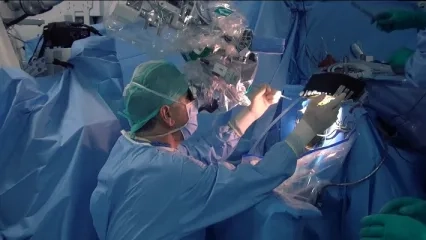Alo Yeditepe
Alo Yeditepe
Lumbar Spondylolisthesis (Lumbar Slipped Vertebrae)
What is slipped vertebrae?
Our spine consists of 33 vertebrae placed on each other in a certain balance. Our spine has three different curvatures enabling this structure to stand in balance. It is not normal for the vertebrae to slip over each other. If this slip occurs in the lumbar region, it is called "lumbar spondylolisthesis" In the region where the vertebrae slide over each other, they can compress the spinal cord or nerves underneath. The spinal cord is usually not affected in the lumbar region. However, in the back and neck regions above the lumbar, the spinal cord can also be compressed, causing highly severe paralyses.
Lumbar spondylolisthesis can occur usually due to aging-related deformations or congenital slides that are already present and sometimes as a result of accidents (falls, traffic accidents). These are the most common causes. Many conditions, such as infections, tumors, and metastases, can also cause slipping.
In addition to decompression (release of nerves or spinal cord), spinal fusion surgery is also required in lumbar spondylolisthesis treatment. In this procedure, surgical implants such as bone tissue or screws can be used between the vertebrae to be joined.
What are the symptoms?
Lumbar spondylolisthesis may not always give symptoms. Complaints are pain, numbness, and weakness in the back or legs. It can cause burning in the legs, cramps, bladder and/or intestinal problems.
Complaints increase with standing and walking for a long time. Complaints may sometimes consist of just mild pain. However, in the most severe cases, paralysis may also occur in the legs.
How is the diagnosis made?
The degree of spinal stenosis can be determined in detail through magnetic resonance imaging (MRI), or computerized tomography (CT) performed after the examination.
What are the treatment options?
When deciding on treatment, whether the patient's complaints, endurance, and quality of life have decreased is assessed.
While physical therapy or analgesics can be administered in mild cases that cause pain, surgical intervention is usually preferred in patients whose pain does not subside, whose quality of life is impacted, or who have progressive leg weakness.
This content was prepared by Yeditepe University Hospitals Medical Editorial Board.
”
See Also
- Causes and Treatment Methods of Cervical Herniated Disc
- What is Parkinson's Surgery?
- Brain / Spinal Cord Spine and Nerve Surgery (Neurosurgery)
- Lumbar Spinal Stenosis
- Spinal Fractures
- Narrow Cervical Canal and Myelopathy
- Brain Battery Connecting Parkinson Patients to Life
- Not All Hand Tremors Are Caused by the Parkinson's Disease
- When Does the Spine Require Surgical Treatment?
- Osteoporotic Spinal Fractures Can Cause Bigger Problems If Not Treated Early
- Patient Selection is Important in Parkinson's Surgery
- Canal Narrowing in the Spinal Cord
- Beware If Your Walking Distance Is Decreasing!
Alo Yeditepe


